You may have noticed that the term algae and plant are separate in the title. Let’s begin our lesson there.
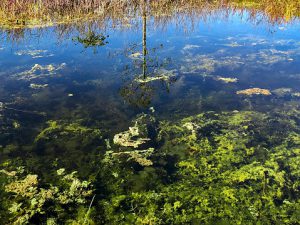
Photo: University of Florida.
Are algae plants?
No…
When I was in school (a long time ago) they did list them as plants – nonvascular plants. Nonvascular plants differed from vascular ones in lacking an internal circulatory system – a vascular system.
Plants are defined as multicellular creatures whose cells possess a cell wall and have the ability to produce their own food. To produce their own food, they use the process of photosynthesis.
CO2 + H2O à C6H12O6 + O2
As you can see in this reaction, the plants need two products – carbon dioxide (CO2) and water (H2O). Carbon dioxide can be found in the atmosphere and, in lesser concentrations, dissolved in water. Water is found almost everywhere, but more often it is extracted from the soil by the vascular system of plants – within the roots.

Photo: Rick O’Connor
You can see that the product produced is a simple sugar (glucose – C6H12O6). This is used by the plant as energy (fuel if you will) to conduct the things plants need to do to obtain their needs. Glucose (C6H12O6) is just a re-arrangement of the “C” “H” and “O” obtained from carbon dioxide and water. To re-arrange this, we will need an energy source to split the water and the carbon dioxide molecule.
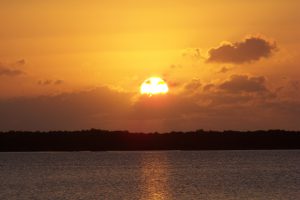
Enter the sun…
THIS is why plants need sunlight. It is the energy source needed to split the carbon dioxide and water molecules and re-arrange them into glucose. In this process there is left over oxygen which they release into the atmosphere – which we are VERY happy they do – because we need this oxygen to survive.
Interestingly… so do the plants. We have always thought of them as creatures who produce oxygen, but few understand that they too need to breath it as well. They produce oxygen all day long, but at night they respirate – just as we do. In respiration we turn glucose into adenosine triphosphate (ATP), an energy molecule to help with needed metabolism.
C6H12O6 + O2 à CO2 + H2O + ATP
In this reaction you can see why we need oxygen… to synthesize the glucose and produce the needed ATP.
So, the difference between plants and animals is how they obtain their glucose. Plants make it. Animals obtain it by consuming either plants or animals.
Plants are creatures who need oxygen, carbon dioxide, and sunlight to produce their glucose. They also need nitrogen, phosphorus, and other minerals which they obtain from the environment – nutrients… fertilizers.
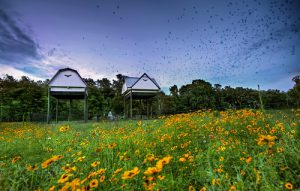
Photo: Flickr
In most plants, photosynthesis occurs in the leaves. So, a plant does everything they can to get their leaves as close to the sun as they can. Some grow very tall very fast. Others have very large leaves to grab as much as they can. Some are grasses so they can grow where the wind is high. There are an estimated 300,000 – 400,000 species of plants on the planet all with different designs to obtain the resources they need to survive.

Growing up… tall… may help you gather sunlight. But what about oxygen and carbon dioxide? What about nitrogen and phosphorus?
Plants have a vascular system similar to our circulatory system. We have arteries and veins that move blood. They have xylem and phloem that move water. The vascular system within the roots allows plants to absorb water and nutrients from the soil. These are then moved up the plant to the leaf using turgor pressure (plants do not have a heart to pump fluid as animals do). If they lose this turgor pressure the plant will become limp and fall over. This happens when the source of water is lost. Roots will move and grow seeking new water sources to return turgor pressure and may enter you home waterlines to do this. Many plant roots compete with each other to obtain this needed resource.
Carbon dioxide is obtained through openings in the leaf called stomata. These “doorways” take in the needed, and release the excess, oxygen and carbon dioxide. All of this material is moved around the plant through this vascular system. These are vascular plants.
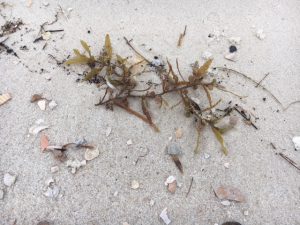
Algae are nonvascular. They do not have xylem and phloem. They must live IN the water in order to obtain it. Some will grow on the shaded sides of rocks and such, but most species live literally in the water. There are between 30,000 and 1,000,000 species of algae.
And they are no longer considered plants. They are now placed in the Kingdom Protista, in which you find all of the eukaryotic unicellular creatures. The reason for this is that even though algae appear to be like plants, their cell make up suggest they are much more primitive. So, the Kingdom Protista is no longer only unicellular.
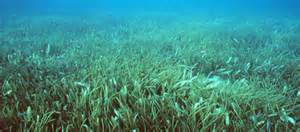
Photo: Virginia Sea Grant
In the marine environment plants run into several problems. First, there is less sunlight. So, they only grow in relatively shallow waters were at least 25% of the light that hits the surface of the water reaches the bottom. They need clear water.
Second, water weighs more than air and so currents and waves can be a problem for them. Pulling and tearing them up from the sediment. In more recent years you can add boat wake to this as well. Because of this they do better in low energy environments such as lagoons.
Third, salt. Salt will force the diffusion of water from the plant much more rapidly than if they lived in freshwater. So, all marine plants have to develop some method of replacing lost water or keeping salt from entering the body.
Because of this, there are few species of marine plants. Most do MUCH better on the beach or inland on the island. At the shores edge we do have a variety of marine plants. They have their roots immersed in salt water, but their stems and leaves are above the water level. These are called emergent plants.
Those completely submerged are called submergent plants and these are usually called seagrasses. Seagrasses differ from seaweeds in that they are vascular plants.

Seaweeds are nonvascular algae – protists. They do very well underwater and some (the red algae) can grow to great depths because they can utilize only blue light to photosynthesize. (See Energy in the Ocean Lesson 2 – light and sound to understand why blue).
A course in Marine Botany would cover both the vascular plants and the nonvascular algae. They are a fascinating group and very important in the health of coastal marine ecosystems. We will learn more details about them later in this course.
ACTIVITY
- Select five different bushes or trees in your yard. Remove 10 leaves from these. Measure how long each is for each species and calculate the mean (average) length for each species. Are they all close to the same? If not, which is longer? Is the longer one a tall or a short plant? Can you explain why their leaves might be longer than the others in your yard? Remember the more your measure, the better the science, so if you want to measure more than 10 / plant – do so… a scientist would.
- If you have several trees in your yard measure the distance between those of the same species. Do you see a pattern? Are they basically the same distance apart? What about the distance from other species – are they closer, farther away, or about the same distance apart as they were from those of their own species? Can you explain why they are the distance apart they are?
- Do you have an area in your yard that is full of trees? If so, is there any grass growing beneath it? How does the amount of grass growing in an open area of your yard differ from the amount growing beneath the trees? Can you explain why this may be?
- Many plants are poisonous. Any idea why? What is the difference between being poisonous and venomous? Search for a list of poisonous plants in north Florida. Do you have any in your yard?
- If you have plants that have flowers on them. Watch them over the course of the day. Do they move in any way? If so, which direction do they move as the day goes by? Why do you think they move in that direction?
IF YOU LIVE ON, OR CAN VISIT, THE BEACH
- Observe the trees growing in the natural parts of the island. How do they differ from those living in town? Why do you think they look like this?
- It is cold this time of year, but you may find seagrass washed ashore along the beach. How do these grasses differ from the ones growing in your yard?
- Seaweeds are tougher to find in our neck of the woods. They are usually attached to rocks and other structure their holdfast can hold onto (remember they do not have true roots, they are nonvascular). IF you can find some, use a knife to cut some in half and observe their structure. How do they differ from true plants in your yard?
 0
0
